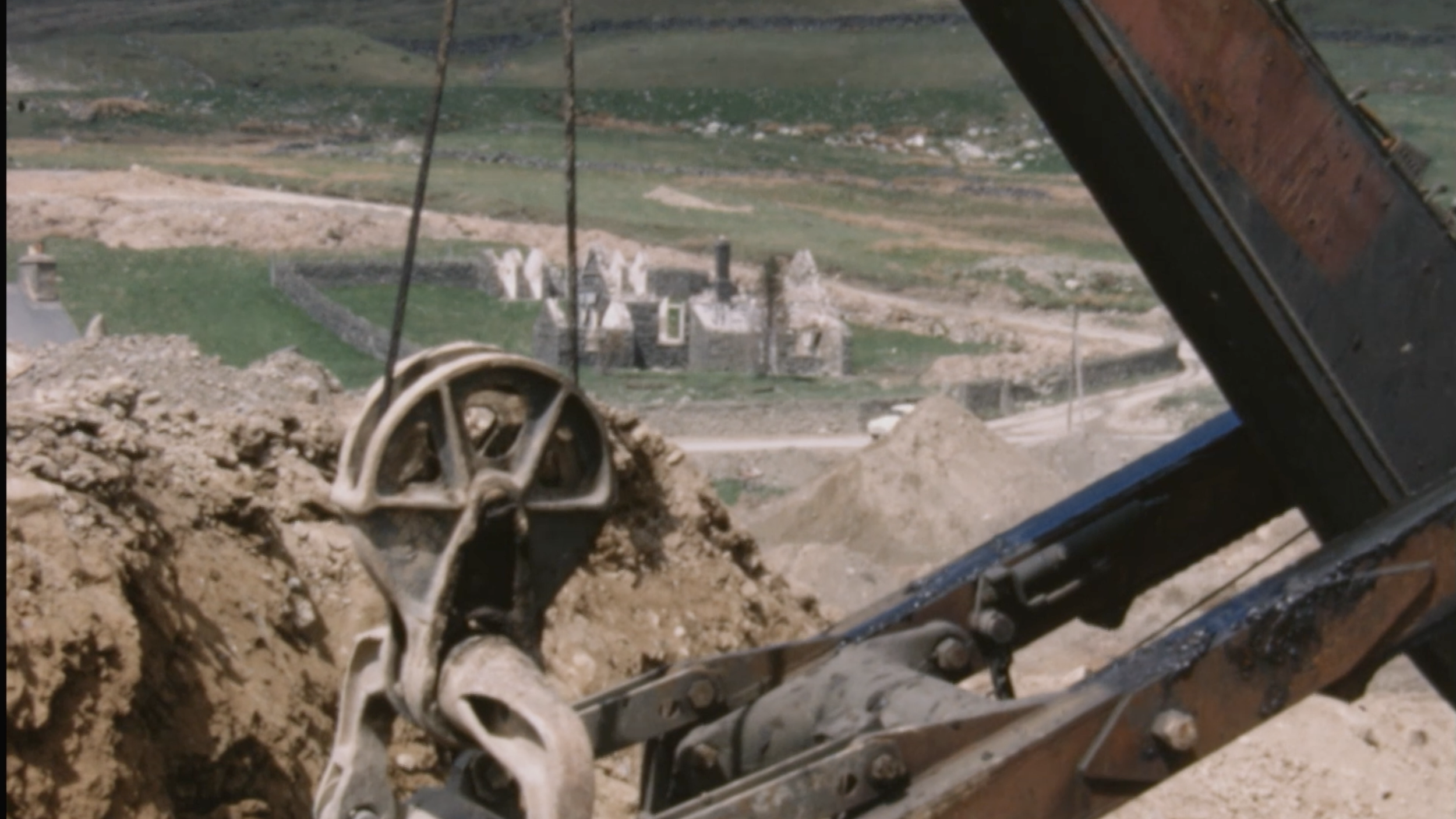behind the notes: 'The day following' with UPROAR
A lost community, archival footage, and folk song. Ahead of its premiere tour in Wales, I am going ‘behind the notes’ of The day following, and sharing its starting point and who or what inspired me.
Still from Tryweryn, the Story of a Valley (1965)
Setting the scene
Our memories wane over time. Our memories compete with the world around us, scrambling to be remembered. Memories make us smile. Memories make us cry. As soon as they might make us feel joy, they may snatch that away and open up old heartache. Memories enable us to recognise who we are and where we are going. The day following is a work that allows us to reflect on memory, and specifically the memories of those whose communities have been taken from them. The music comes and goes. Snippets of old tunes are heard and buried. Distant hymns and church bells wash over us.
the day following is commissioned by UPROAR ensemble and Michael Rafferty, for a Welsh Tour alongside works by Richard Baker, Lynne Plowman, Johns Adams and Olga Neuwirth in February and March 2024.
A lost community on film
At the centre of the piece is archival footage of Capel Celyn village and farms of the Tryweryn Valley, first broadcast in 1965, weeks before the flooding of this Welsh-speaking community. The local school is closed, the chapel celebrates its last wedding, furniture that has stood in farmhouses for centuries is removed, graves are dug up and re-located. Children staring directly down the lens. Thus did the Tryweryn Valley and the village of Capel Celyn become one vast reservoir via an Act of Parliament that allowed Liverpool City Council to proceed with the creation of its new water supply despite the opposition of every Welsh MP bar one.
The Tryweryn Bill allowed Liverpool City Council to by-pass obtaining planning consent from the relevant local authorities. Wales’ powerlessness was exposed and protests involved members of the Free Wales Army and Mudiad Amddiffyn Cymru. Pupils and staff of Friars School in Bangor filmed the demolition and construction work from start to finish and have produced what might have been regarded as an objective record of an emotive event. The school concludes that the reservoir has enhanced the natural beauty of the area and that it will attract tourists “to enjoy the sailing and fishing on these once troubled waters.
The day following is a sonic landscape for excerpts of these now distant memories of a lost community in Wales. Archival film is offset with images of the reservoir today, placing the past in contrast with today. Permission to use the archival footage has been kindly granted by Llyfrgell Genedlaethol Cymru | The National Library of Wales, the National Library of Wales Screen and Sound Archive, and Bangor University.
If you wanted to watch a snippet of the original broadcast feature, you can watch it for free through the BFI Player: https://player.bfi.org.uk/free/film/watch-tryweryn-the-story-of-a-valley-1965-online
under the surface
I have been interested in exploring ideas of home, community, and nostalgia for some years in my music - from o dan y ddaear, based on the recorded history of Welsh trad song, to the ironic reflection of nationalism in anthem - and this new work is no exception. It has ended up being a big mish-mash of influences, all bred from the 1965 tragedy in Capel Celyn.
“The day following
was the day when the family dresser
would be emptied, upturned,
roped flat like a makeshift raft.
The Drowning then began”
There are several influences that lurk under the surface of The following day, besides the archival footage. Throughout the video presented alongside the music, we chart the journey of Capel Celyn’s demise with excerpts of from Samantha Wynne-Rhydderch’s poem ‘71,200 Megalitres’. Written on the 55th anniversary, Wynne-Rhydderch created this moving and bludgeoning reflection on Capel Celyn in contrast to the broadcast and softer retoric used to report the tragedy.
Wynne-Rhydderch commented, “‘Flooding’ might be said to refer to something that is accidental, as though caused by too much rain, whereas this was a deliberate act, resulting in the displacement of an entire village and several farms.” This poetic reflection on the injustice and this entirely personal response to Capel Celyn became a helpful visual narrative for this new musical work.
Canu Gwerin [Folk Song]
Alongside the visual aspects, there also have glimmers of folk song in The day following. Although they come and go, like forgotten memories or when you’re trying hard to remember how a song goes, the unusual and rarely heard trad. song, Y Môr [The Sea], is incorporated.
Found in an edition of the Cylchgrawn Cymdeithas Alawon Gwerin Cymru [Journal of the Welsh Folk-Song Society], the tune is unusual for its incomplete feeling and mixed tonality (starting major and finishing minor, with weird twists and turns). There is a journey through the tune, from happiness to sadness. Unusual phrasing, almost as if the tune is trying to figure itself out as it ticks along. There is also an irony built into the tune as the words talk of the odd (and occasionally amusing) things you find at sea. Visual imagery and musical imagery meet. Asking questions of what we might find below the water surface level.
Still from Tryweryn, the Story of a Valley (1965)
More information about The day following
For full information about this new work, please visit this dedicated webpage. (lInk embedded)
When can I hear this being performed live?
For more information about when you can hear this in concert, please visit this webpage (link embedded)



